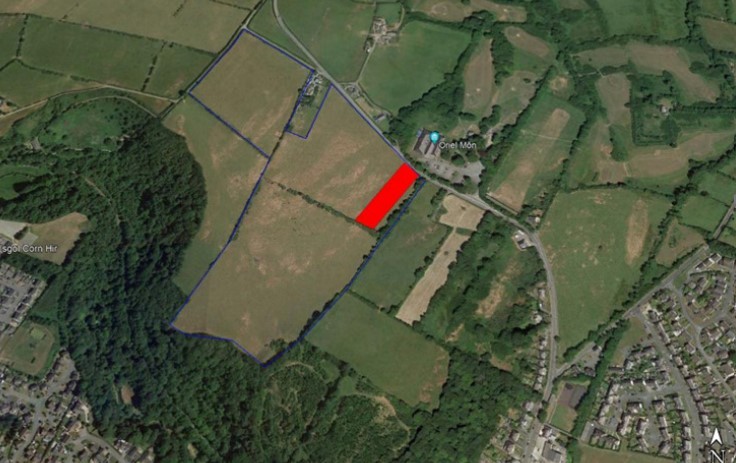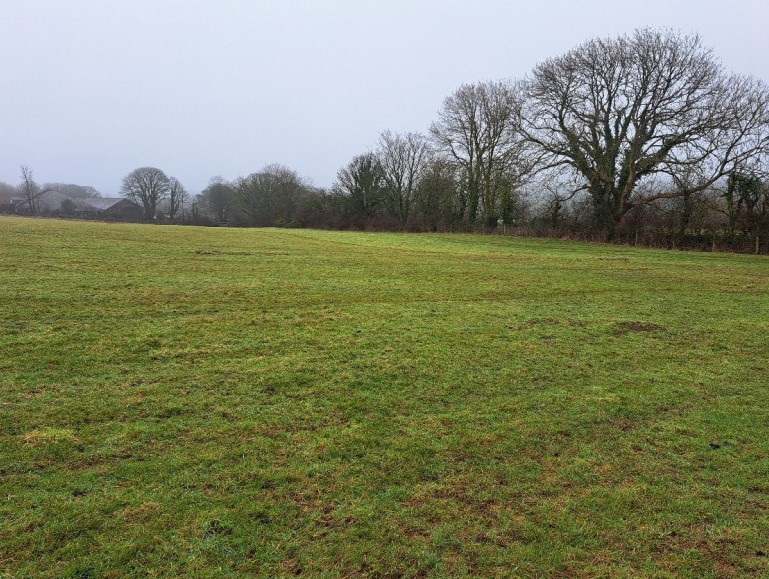PROPOSALS for a ‘traditional’ council cemetery for around 1,300 graves in Llangenfi will be considered by planners.
The graveyard on land opposite the Oriel Gallery is designed to take pressure off the Lon Newydd burial site, which is only a few years away from being full.
Anglesey County Council planning department is currently processing a full application for the change of use of agricultural land beside the B5111, into a new cemetery.

The proposal includes a car park for 35 cars, and alterations to the existing access on land adjacent to the Oriel Mon gallery.
The earmarked site comprises grazing land in a rural location less than 50m from the gallery and museum.
It will be approximately 500m from the town, surrounded by mature trees and bushes.
A groundworks survey document prepared for the council by the CDS Group said: “It is proposed to construct a traditional cemetery on this site along with associated landscaping and burial areas.
“The aim of this development is to provide much needed burial space for the local area.
“The existing cemetery in Llangefni, Lon Newydd is close to capacity, with less than two years burial space remaining.
“For the purposes of this groundwater risk assessment, the anticipated burial rate, based on data provided by the client for this site is estimated as being 20-25 per year.”
The document also explains that 800 burial plots could usually be fitted into one acre, and as this site is 2.4 acres it might wrongly suggest a maximum number of possible graves at 1,920.
“However,” the report notes “due to the shallow depth to the bedrock in some areas of the site, it is unlikely that the maximum developable area can be realised.
“Therefore we have reduced the area considered developable for burials down to 1.6 hectares, which would provide 1,280 burial plots.”
Based on the proposed burial rate of 20-25 per annum, the site would also have an estimated lifespan of around 51-64 years.
Historical maps show that the site has remained open, undeveloped rural land from the late 1800s until now.
The report states there was “no significant sources of on site or offsite contamination identified”.
The surrounding area was first shown on the 1889 map comprising “predominantly open rural land”.
“Offsite to the north east a series of buildings mapped as Pen-Rhos are shown and offsite to the southeast a small quarry is mapped,” the report notes.
“Little in the way of significant change was noted until the 1987-1993 map when the former buildings associated with Pen-Rhos have been demolished and replaced with a new building a parking areas associated with a new golf club.
“By the 1994 map, a new building, Oriel Mon (museum) has been developed adjacent to the golf club, which includes new areas of parking.”
A diagram in the plans also shows there would still be a right of way from the graveyard into the adjoining land at Nant Y Pandy.
The application has been made by Llangefni Town Council, through the agent Gwyn Hughes, and is in the Canolbarth Mon ward.
Regarding any potentially ecologically important habitats, the proposed development is anticipated to have “no significant negative
impact”.
A planting plan shows a native mixed hedge and scattered trees which it states “will provide shelter and food for a large number of mammals, bird, reptile and invertebrate species”.
The hedge with standard trees will also comprise of a “native species rich” hedgerow, it says.
Details of the pre-application advice state: “Subject to the provision of information as part of any formal application…it is considered that a cemetery in this location can be supported.”



















